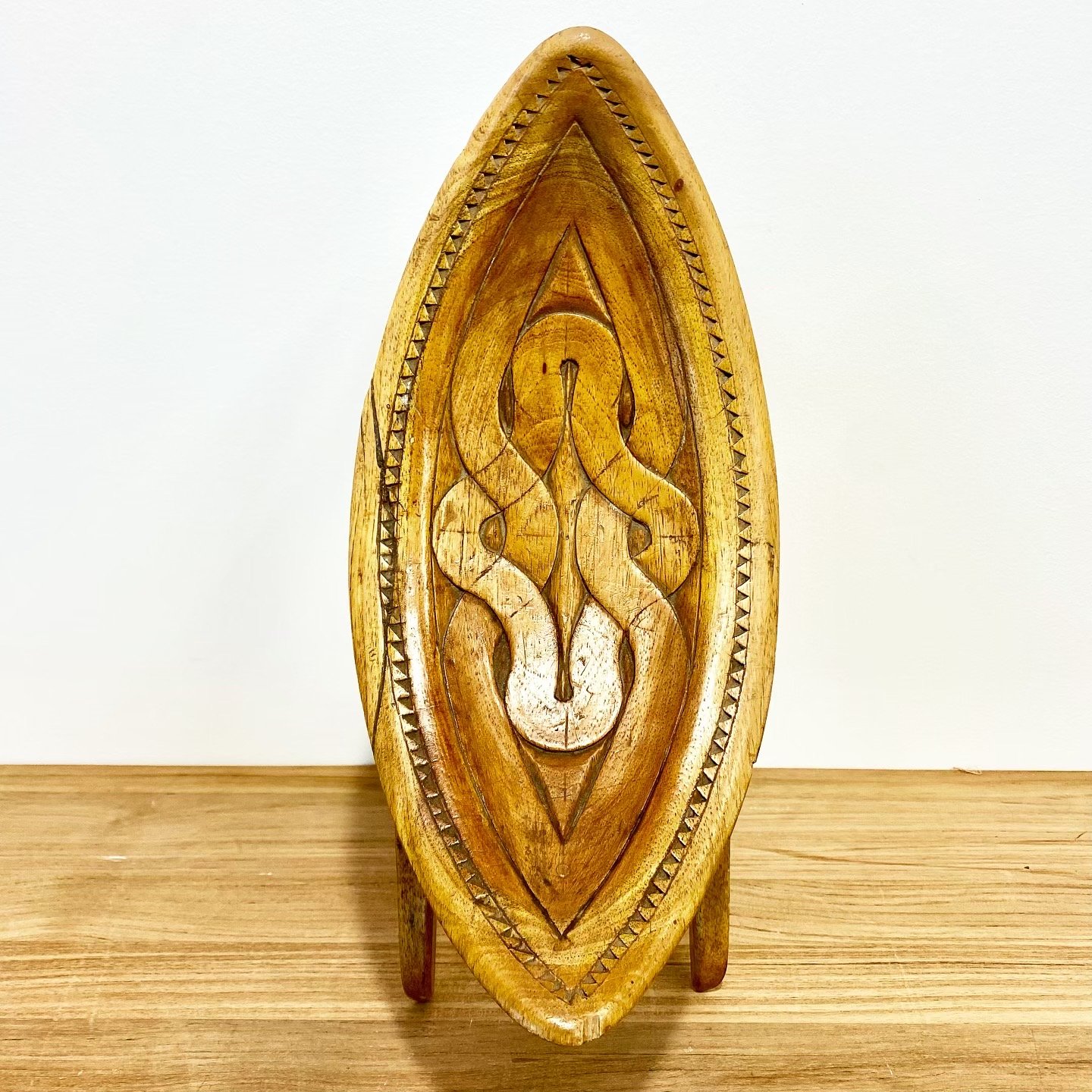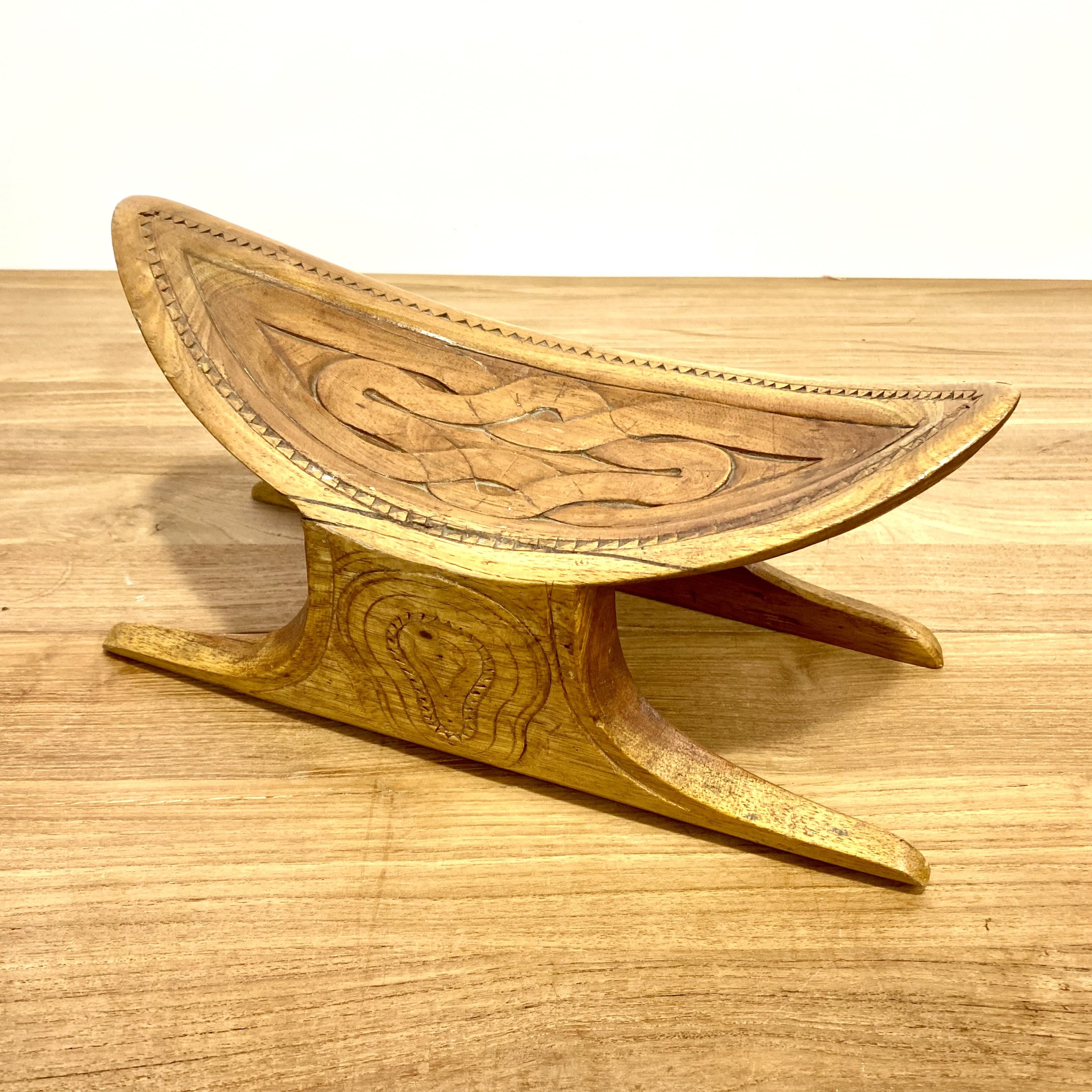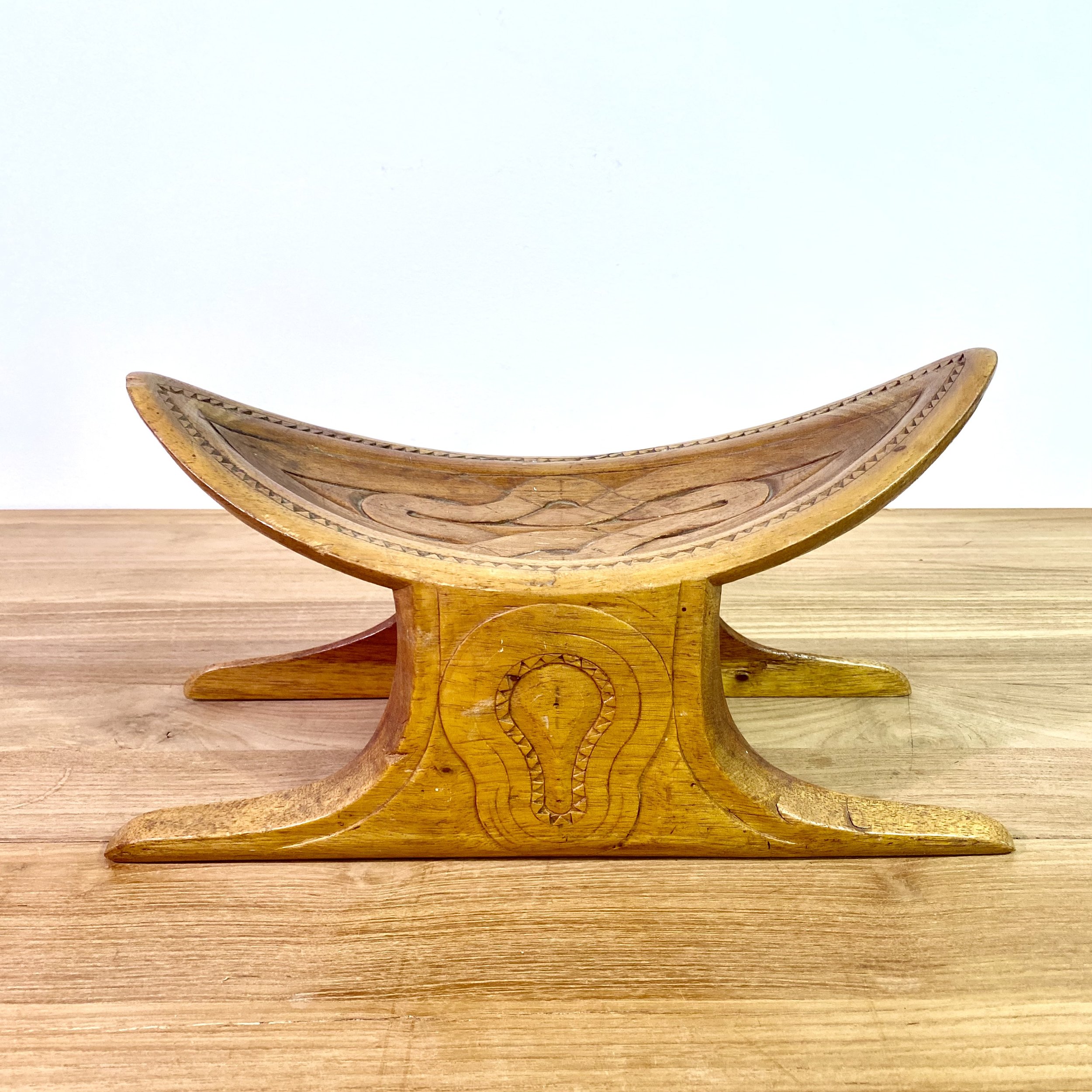 Image 1 of 5
Image 1 of 5

 Image 2 of 5
Image 2 of 5

 Image 3 of 5
Image 3 of 5

 Image 4 of 5
Image 4 of 5

 Image 5 of 5
Image 5 of 5






Ndyuka (Maroon) Stool
A boto bangis, or low stool, crafted by the Ndyuka people in the Republic of Suriname (or possibly French Guiana), on the northern coast of South America. It is carved from a single piece of mahogany, with the knot-work motif characteristic of Ndyuka carving. Despite their location, the Ndyuka's cultural roots are African. They are descended from "Maroons" who escaped from Dutch slaveholders in the 17th and 18th centuries, starting their own villages and re-creating a free society in the New World. Maroon societies existed throughout the slave-holding Americas, from Brazil and Peru to Florida and Texas. Most of these communites were qiuckly found and destroyed by "slave-catchers." But some survived and flourished, especially in Suriname and French Guiana, but also in Belize, Brazil, Colombia, and Jamaica.
One of the wonderful aspects of Ndyuka craft is that it has traditionally been centered around a gift-giving (i.e., "non-commercial") culture. Beautiful objects were mostly created as expressions of affection, and to cement social ties. Traditionally, woodcarving was the province of men, who often gave their work to women. For their part, women specialized in the textile arts, as well as the intricate decoration of calabash gourds. Unsurprisingly, women would find themselves with collections of elaborately-carved stools and mortars, while the men would accumulate wardrobes with far more beautiful clothes than they could wear (and lots of gourds)! The historical image is of a young Ndyuka wood-carver, taken in 1947.
Note that this stool has an old break, which seems to have been repaired with some sort of strong natural adhesive. 15.5" long x 7.75" tall x 7.25 wide.
A boto bangis, or low stool, crafted by the Ndyuka people in the Republic of Suriname (or possibly French Guiana), on the northern coast of South America. It is carved from a single piece of mahogany, with the knot-work motif characteristic of Ndyuka carving. Despite their location, the Ndyuka's cultural roots are African. They are descended from "Maroons" who escaped from Dutch slaveholders in the 17th and 18th centuries, starting their own villages and re-creating a free society in the New World. Maroon societies existed throughout the slave-holding Americas, from Brazil and Peru to Florida and Texas. Most of these communites were qiuckly found and destroyed by "slave-catchers." But some survived and flourished, especially in Suriname and French Guiana, but also in Belize, Brazil, Colombia, and Jamaica.
One of the wonderful aspects of Ndyuka craft is that it has traditionally been centered around a gift-giving (i.e., "non-commercial") culture. Beautiful objects were mostly created as expressions of affection, and to cement social ties. Traditionally, woodcarving was the province of men, who often gave their work to women. For their part, women specialized in the textile arts, as well as the intricate decoration of calabash gourds. Unsurprisingly, women would find themselves with collections of elaborately-carved stools and mortars, while the men would accumulate wardrobes with far more beautiful clothes than they could wear (and lots of gourds)! The historical image is of a young Ndyuka wood-carver, taken in 1947.
Note that this stool has an old break, which seems to have been repaired with some sort of strong natural adhesive. 15.5" long x 7.75" tall x 7.25 wide.
A boto bangis, or low stool, crafted by the Ndyuka people in the Republic of Suriname (or possibly French Guiana), on the northern coast of South America. It is carved from a single piece of mahogany, with the knot-work motif characteristic of Ndyuka carving. Despite their location, the Ndyuka's cultural roots are African. They are descended from "Maroons" who escaped from Dutch slaveholders in the 17th and 18th centuries, starting their own villages and re-creating a free society in the New World. Maroon societies existed throughout the slave-holding Americas, from Brazil and Peru to Florida and Texas. Most of these communites were qiuckly found and destroyed by "slave-catchers." But some survived and flourished, especially in Suriname and French Guiana, but also in Belize, Brazil, Colombia, and Jamaica.
One of the wonderful aspects of Ndyuka craft is that it has traditionally been centered around a gift-giving (i.e., "non-commercial") culture. Beautiful objects were mostly created as expressions of affection, and to cement social ties. Traditionally, woodcarving was the province of men, who often gave their work to women. For their part, women specialized in the textile arts, as well as the intricate decoration of calabash gourds. Unsurprisingly, women would find themselves with collections of elaborately-carved stools and mortars, while the men would accumulate wardrobes with far more beautiful clothes than they could wear (and lots of gourds)! The historical image is of a young Ndyuka wood-carver, taken in 1947.
Note that this stool has an old break, which seems to have been repaired with some sort of strong natural adhesive. 15.5" long x 7.75" tall x 7.25 wide.